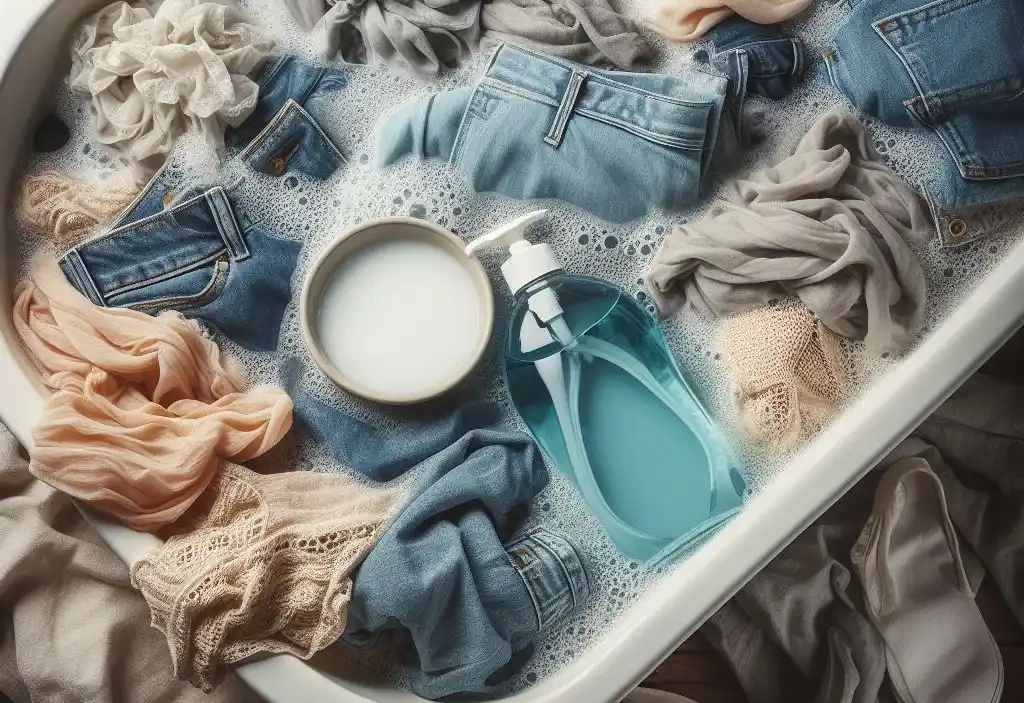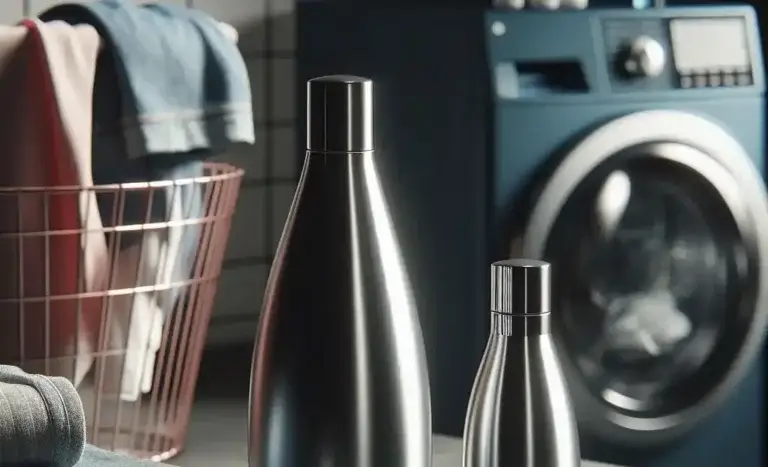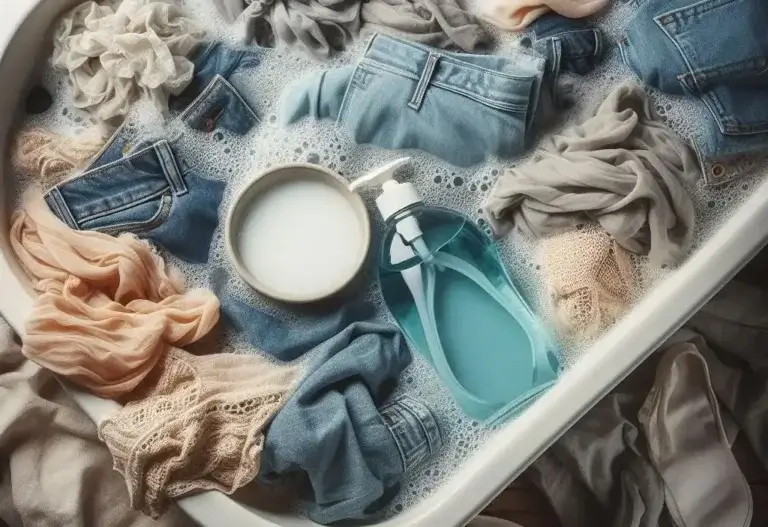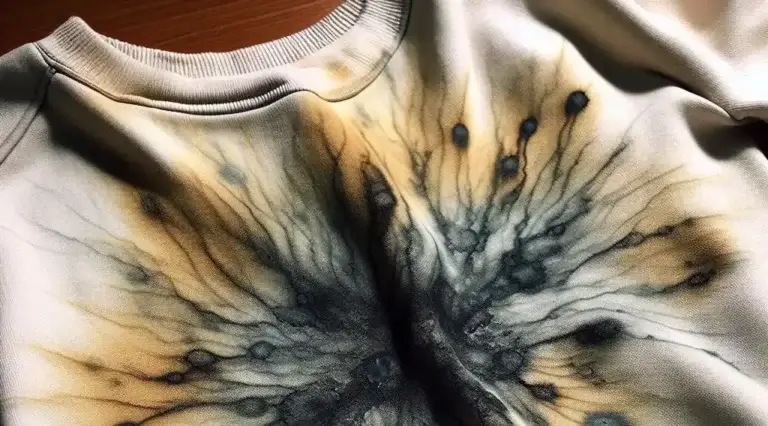Can I Wash Clothes With Towels? The Complete Guide to Wash Towels With Clothes
Wondering if you can wash clothes with towels? The idea of washing towels and clothes at once is a common curiosity for anyone trying to streamline laundry and maximize efficiency.
While it may seem harmless to wash clothes and towels together, there are some downsides to consider. Towels can be rough on clothes, leading to excess lint, pilling, and even damage. When you’re washing towels together with clothes, their thick texture may affect the drying time of your laundry.
This guide covers everything you need to know about washing clothes with towels. We’ll explore the idea to wash clothes and towels together and discuss the pros, cons, best practices and some alternatives to help you decide what suits your situation the best.
Table of Contents
Should You Wash Towels With Clothes?
When you’re washing clothes and towels, the main considerations are convenience, effectiveness, and preventing damage.
Here are the main pros and cons of washing towels with clothes:
Pros of Washing Towels With Clothes
- This method saves time by allowing you to do fewer loads when you wash sheets and towels with clothes.
- Washing new towels with clothes uses less water since you’re combining loads.
- It’s simple to just throw everything in warm water at once.
Cons of Washing Towels With Clothes
- If you don’t wash them separately, towels can attract lint from clothes, becoming scratchy and less absorbent.
- The texture of new towels can cause pilling and fraying on delicate fabrics if you don’t wash them separately.
- Towels take longer to dry and can prevent other items from drying fully
- When you don’t wash them separately, odors from damp towels can transfer to your clothes.
- If you don’t wash new towels separately, colors may bleed onto your clothes.
As you can see, there are compelling reasons not to wash towels and clothes together. Still, in a pinch when you need clean towels fast, it likely won’t cause catastrophic damage to throw one load together.
When deciding, take stock of what clothing items would be washed with the towels. Delicate fabrics like silks and cashmere sweaters are more prone to damage from the abrasive texture of towels. Sturdy cotton t-shirts likely won’t suffer any issues.
Tips for Washing Towels With Clothes
If you do opt to wash your towels and clothes in the same load, keep these tips in mind:
- Shake towels out thoroughly first – Remove any debris, hair, or particles that could transfer to clothing items. Give each towel a vigorous shake.
- Use a gentle cycle – Opt for a delicate or permanent press setting rather than a heavy-duty cycle. The gentler agitation reduces the risk of damage.
- Wash towels inside-out – This keeps the looped terrycloth side facing inward rather than brushing against clothing items.
- Use a lint roller – Give towel loads an extra once-over with a lint roller on any clothing items before wearing or drying to remove stray fibers.
- Line dry towels – Hanging towels to dry prevents excess lint from accumulating in your dryer as well as cut down on drying time for clothing items.
While these tips reduce the potential downsides, separating towels and delicate clothing is still ideal for preventing premature wear, damage, and lint accumulation over time.
Best Practices for Washing Towels
To keep towels fresh, clean, and lint-free for the long haul, follow these best practices:
- Wash bath towels after 3 uses – Launder towels between each user or after 3 uses, whichever comes first. More frequent washing prevents the buildup of dead skin cells, traces of dirt and oil, and bacteria.
- Use hot water – Hot water is key to fully sanitize towels and break down residues. Ensure your machine’s hot cycle reaches at least 130°F or higher for proper disinfection.
- Skip the fabric softener – Fabric softeners and dryer sheets leave behind a film that reduces towels’ ability to absorb moisture. Plus, the added fragrance can encourage bacterial growth. Wash towels without these additives.
- Shake out lint – Before drying, give each towel a vigorous shake to loosen any lint that accumulated during washing. This prevents lint transfer to future loads.
- Dry towels completely – Ensure towels dry completely before the next use. Remaining moisture allows mildew and bacteria to grow.
By following these simple guidelines, you’ll keep your towels cleaner and lint-free for better functionality and longevity.
Can I Wash Clothes With Towels – Closing the Debate

The laundry basket overflows, beckoning you with its tangled pile of dirty clothes and towels. Time is tight, and the siren song of a single, efficient wash cycle sings in your ears. But wait! Before you toss everything in together, let’s unravel the truth about cohabiting clothes and towels in the washing machine.
The Case for Coexistence:
- Convenience is king: Combining towels and clothes in one wash saves time and energy. Who doesn’t love ticking two chores off their list in one fell swoop?
- Shared resources: Detergent, water, and electricity – washing together maximizes efficiency and minimizes environmental impact. Every little bit counts!
- Small loads, begone: For those of us with perpetually half-full laundry hampers, combining items can create a satisfyingly plump wash that maximizes machine capacity.
But Hold On, a Word of Caution:
- Fabric foes: Towels, especially new ones, are notorious for shedding lint and dye. This can wreak havoc on delicate clothes, leaving them fuzzy and discolored.
- Hygiene hurdles: Towels harbor more bacteria than clothes, particularly bath towels. Mixing them with undergarments or light-colored items raises the risk of cross-contamination.
- Temperature tantrums: Towels often require hotter water and heavier cycles than clothes. Not all fabrics can handle this harsh treatment, risking shrinkage or damage.
- Drying dilemmas: Towels are slow picks in the dryer. Sharing space with clothes can lead to uneven drying, leaving your favorite sweater damp and your towels still damply dreaming of warmth.
Navigating the Laundry Labyrinth:
Fear not, intrepid launderer! With a little strategic planning, you can navigate the washing machine jungle and emerge victorious, with both clean clothes and towels. Here’s your survival guide:
- Fabric first: Group clothes and towels by fabric type – cotton with cotton, microfiber with microfiber, and so on. This ensures everyone gets the wash they deserve.
- Color coordination: Sort by color as well. A rogue red towel shedding its dye onto your white blouse is a laundry tragedy waiting to happen.
- Label love: Check care labels religiously. They hold the secrets to your fabrics’ ideal washing temperature and cycle. Follow their guidance like a laundry gospel.
- Hygiene heroes: Heavily soiled towels or those used for bodily fluids deserve their own solo spin cycle. Play it safe and keep them separate from your undergarments and delicates.
- Weight Watchers: Avoid overloading the machine. Towels are thirsty beasts, soaking up water and leaving less for your clothes. Give everything room to breathe and get squeaky clean.
- Detergent delights: Choose a good quality detergent and fabric softener formulated for both towels and clothes. This ensures optimal cleaning and softness for all your laundry comrades.
So, can you wash clothes with towels? The answer, like most things in life, is: it depends. Weigh the convenience against the potential pitfalls, and choose the path that best suits your fabrics, hygiene needs, and laundry tolerance. Remember, a little planning and sorting can go a long way in keeping your clothes and towels happy (and clean!) in the washing machine wonderland.
How to Wash Towels Separately From Clothes
Washing towels apart from regular clothes is the best way to prevent lint transfer, odor retention, and other laundry mishaps.
Here are some tips for washing towels separately:
- Dedicate a towel load 1-2 times per week – Set aside one or two laundry days per week just for towels. This ensures they get washed at the proper frequency.
- Wash by bathroom – For a large household, consider doing separate towel loads for each bathroom or family member. This contains odors and prevents cross-contamination.
- Use white vinegar – Add 1⁄2 cup distilled white vinegar to the washing machine rinse cycle when laundering towels. The vinegar works to brighten fabrics, remove residues, and deodorize without leaving a scent behind.
- Wash towels on hot – Be sure to wash towel-only loads using the hottest setting appropriate for the fabric. The extra heat thoroughly removes soils and bacteria.
- Dry towels completely – Move towels promptly from the washer to the dryer. Dry on high heat until completely dry to prevent mildew growth in the folds.
By dedicating a portion of your laundry routine to towel-only loads, you’ll keep them cleaner and lint-free over the long run.
FAQs: Can I Wash Clothes With Towels
Still, have questions about whether and how to wash towels with clothes? Here are answers to some frequently asked questions:
Can You Wash Towels With Sheets?
Yes, towels and sheets can generally be washed together without issue. Both items are heavyweight cotton fabrics that require high heat and long dry times to wash and dry properly.
Washing them together allows you to optimize settings for these similar fabrics. However, if your sheets are a lighter delicates fabric like silk or satin, it’s best not to wash them with heavy terrycloth towels which could cause damage.
Can You Wash Towels With Jeans?
It’s best not to wash towels with jeans or other sturdy denim items. The weight and texture of jeans can be abrasive to towels, causing pilling and traces of indigo dye transfer.
Additionally, towels take significantly longer to dry than jeans. So combining these two heavyweight items causes jeans to wrinkle and towels to stay damp.
Can You Wash Colored Towels With White Clothes?
It’s risky to wash colored towels with white clothing items. The dye from darker towels often bleeds or transfers during washing, especially when new. This causes irreversible graying or discoloration on light clothing.
To prevent dye transfer, wash white items separately from colored towels. If you do wash them together, use cold water and add a dye magnet product such as Carbona Color Grabber to attract loose dyes in the wash water.
How Should You Dry Towels Washed With Clothes?
If you do end up washing towels with a load of clothing, dry the items separately. Move the towels to a drying rack or separate dryer load while line drying more delicate clothing items.
The thick texture of towels takes longer to dry fully. Leaving clothing items in with damp towels can cause odor retention, mildew growth if left wet, and wrinkling of clothing.
Alternatives to Washing Towels With Clothes
While washing towels with clothes does save time and water, the downsides often make separate laundering worth the effort. Here are some alternatives:
Install a Towel Warmer
Heated towel warmers allow you to reduce towel laundry while keeping them fresh between uses. The gentle heat helps evaporate moisture to prevent mildew and bacterial growth.
Buy More Towels
Having ample towels on hand for each household member makes it easier to dedicate laundry days for towels-only loads. Opt for a set of lightweight towels in addition to plush bath towels. The thinner style takes less time to launder and dry.
Use Fabric Towels for Kitchen Cleaning
Swap paper towels for reusable fabric towels to cut back on laundry. Fabric towels launder better with kitchen items like aprons and clothes rather than with bath towels or clothes.
Assign Towels to Each Family Member
Eliminate sharing by giving each family member their own set of bath towels. This allows you to wash them less frequently and contain odors. It also teaches kids and teens to take responsibility for their own laundry.
Consider Commercial Laundry Service for Towels
For large households with continual towel usage, a commercial laundry service can handle the heavy-duty sanitizing of these items requires separation from more delicate personal clothing. This also reduces wear and tear on your washer and dryer.
Conclusion
While combining clothes and towels in the washing machine may seem like a time-saving shortcut, the answer ultimately depends on the specifics of your laundry load. Matching similar fabrics and colors, considering the level of soiling, and factoring in drying times are all crucial for a successful wash day. Ultimately, listening to your laundry – respecting the needs of different materials and avoiding unnecessary wear and tear – is the key to keeping both your clothes and towels happy and functional. So, toss them in together confidently if the conditions are right, or treat them to solo cycles for optimal care. Remember, washing wisely leads to washing well, no matter how you choose to spin the cycle.








